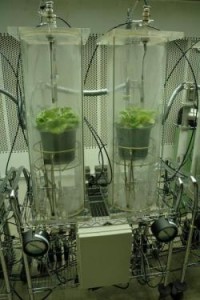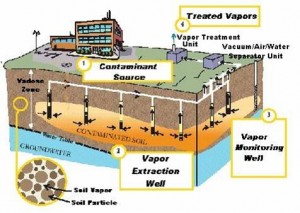 Some people claim that it’s possible to grow plants in total darkness. If you’d like to see for yourself, you’ll find all the information you need right here. Think what a great science project this could make for you or someone you know.
Some people claim that it’s possible to grow plants in total darkness. If you’d like to see for yourself, you’ll find all the information you need right here. Think what a great science project this could make for you or someone you know.
To give you a general overview of the experiment, a seed is placed in a container along with two metal plates. The container is placed in a box or somewhere light can’t reach it. Wires from the plates go to a plate outside the house and to an electrical ground inside the house. Energy gathered from the outside plate travels down the wire to the seed where it causes the seed to sprout and grow in the absence of sunlight.
We’ll be using seeds in this case, but you can also try using young or mature plants as well. Just know that as the size of the plant increases, the size of the plate must also increase. It may take some experimentation to find the right size of the metal plate in relation to the size of the plant.
Here is a list of things you’ll need for this experiment:
1. Two lengths of thin, insulated wire for each container. They can be any gauge you have around.
2. Three metal plates (approximately 2″ x 2″) for each seed. Aluminum roof flashing works great.
3. A small container for each seed.
4. Seeds of your choice for planting.
HOW TO 1
Find two wires that are long enough for one to reach from where you have the container inside the house, to a high spot outside the house. The other needs to be long enough to reach a grounding source, such as a water pipe, inside the house.
HOW TO 2
Strip away an inch or so of the insulation from both ends of each wire and attach the one going to the grounding source to one of the plates as follows:
Drill a small hole close to the edge of the plate and thread the wire through it. Loop the bare wire back to itself and twist the wires together. Solder the wire at the hole to keep it in place and to make the electrical connection.
You can also use duct tape, glue, or anything else you can find to keep the bare wire always touching the metal plate. An electrical connection to the plate is crucial for this to work.
HOW TO 3
Place the metal plate in the container where you’ll be planting the seed and run the wire up and over the edge. Fill the container with potting soil or dirt and plant the seed. Place the container on a table a few feet above the ground.
HOW TO 4
Run the wire from the plate to an electrical ground. An easy place to find a ground is underneath a sink. Wrap the bare wire around one of the bare pipes coming out of the wall to make this connection.
HOW TO 5
Attach the longer wire that will be going to the high spot on the outside of the house to another metal plate. Drill a hole, insert and twist the wire, then solder in the same manner as the first plate.
HOW TO 6
This HOW TO may take a bit of ingenuity on your part, but you need to find a way to suspend the second plate a few inches above the soil where the seed is planted. In doing so, this plate can’t touch the soil in any way. Devise whatever method you can to ensure that no contact is made.
A possible solution might be to put, over the top of the seed, one of those plastic spacers that sits in the middle of a pizza to keep the lid from smashing in. Push the legs of the spacer into the dirt and attach the metal plate to it to hold it suspended over the seed.
As the experiment progresses and the seed grows, you will need to think of another way to suspend the plate over the plant. Test different heights for the upper plate and find the height that allows optimal plant growth.
HOW TO 7
Finally, connect the free end of the wire from the upper plate to the remaining plate as already described. Guide the plate and wire outside to a high spot, either on the roof, in a tree, or on a pole. Placing this plate the greatest distance possible from the ground will allow more energy to flow down the wire to the plant.
That’s all there is to it! You’re now ready to sit back and watch something mysterious happen. Water the plant as needed and check for growth.
Try different variations of this experiment and have some fun finding out what works best for you. If you have success, share what you learn with others. Science is for us to learn and use, and when we give this information to others, we all benefit.

